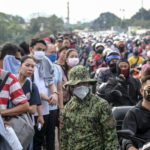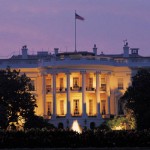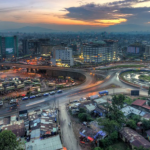The Parliamentary System Fits the Philippines
Among the “occupational hazards” of being an advocate for the Philippines’ eventual adoption of the parliamentary system is to be on the receiving end of irrational and unfounded charges that the Philippines is “unfit” to use such a system because – according to the detractors – it is “incompatible” with who we are as a people. Countless times has this issue cropped up with different people bringing up our almost 50 year colonial “tutelage under the Americans” as being a major reason for us to have to stick to what – at first glance – appears to be a carbon-copy of the U.S. Presidential System.
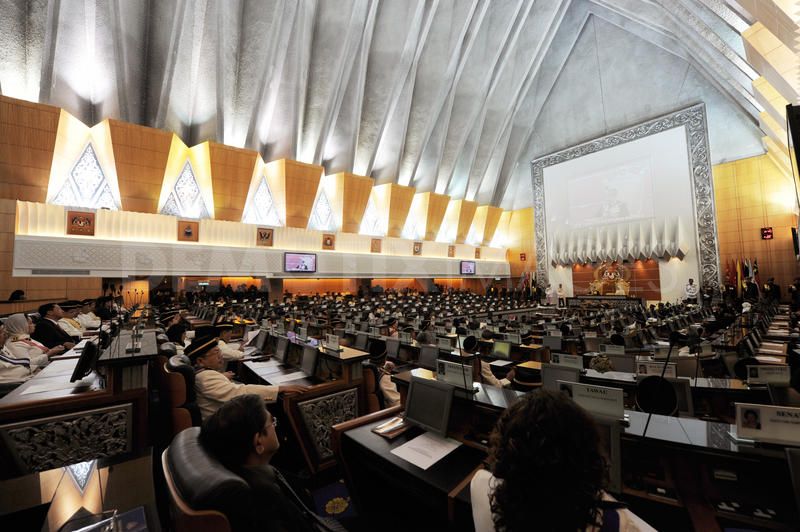
If Malaysia – whose majority ethnically resembles Filipinos – can thrive within a Parliamentary System, then the Philippines can too
Needless to say, consistent with the observations made by Stanley Karnow in his book “In Our Image”, I have very often responded that the extent to which the Filipino is “Americanized” is largely superficial, limited mostly to Hollywood, Disney Cartoons, American Pop Music & Pop Culture, and other American cultural icons. Moreover, I also mentioned that most of the more relatively thorough cultural “Americanization” was often limited to members of the middle, upper-middle, and upper classes who almost exclusively speak English at home.
If anything, I’ve had to point out that the vast majority of Filipinos, particularly those who are classified as members of lowland Christian Filipino ethno-linguistic groups, are essentially indigenous Malayo-Polynesian (at the sub-stratum level), Hispanic (at the cultural super-stratum), and were predominantly raised as Catholics. In other words, the DNA that a majority of Filipinos have is mostly of Austronesian and Malayo-Polynesian origins, similar to the DNA of the Malays and other indigenous “Bumiputras” of Malaysia, the “Pribumi” Indonesians, the diverse Gaoshan “aboriginal” hill-tribes of Taiwan, Chamorros of Guam, Samoans, Tongans, and even the Maoris of New Zealand, and most grew up in a culture that was essentially formed under centuries of Spanish influence and direct Catholic tutelage.
But are we American to the core? Obviously we are not. We are especially lacking of that inner “ethos” that defines what “typical American” was supposed to define for a very long time. In fact, even among the small minority of predominantly English-speaking privileged classes, their culture is not exactly “American” to the core. If we looked at the external manifestations of taste, perhaps yes. If we looked at the general work ethic and manner of interpersonal-relations, we’ll find that Filipinos are not at all like Americans. If we were to look at how to characterize the dominant culture of the USA, it would have to be essentially immigrant Northern European (what they call “White”), Anglo-Saxon, and predominantly Protestant.
In essence, the characteristics of the dominant culture of the USA are not exactly the same as the dominant characteristics of the dominant culture of the Philippines. Now lest anyone try to contest the common definition of the dominant culture of the USA, let me preface that with a disclaimer: While the modern-day USA is a melting pot of so many other cultures that fall outside of the traditional “White Anglo-Saxon Protestant” categorization as today there are many Italian, Hispanic, and Irish Catholics, African-Americans, Asian-Americans, Arab-Americans, Jewish Americans, Muslim Americans, and many others, the operant word is “dominant.”
The dominant culture of the USA – the same culture of the Founding Fathers rallied around by most of the colonists who declared American Independence in 1776 – was predominantly Northern European, Anglo-Saxon (from England and other parts of the British Isles), and Protestant. Obviously, the cultural and historical difference of the dominant Malayo-Polynesian (which many of us refer to as “kayumanggi”) origins and Spanish-influenced cultural identity of most Filipinos against the dominant White and Anglo-Saxon cultural identity of most Americans in itself actually explains why US-style Presidentialism hasn’t exactly worked in the Philippines the same way it works in the USA. So how about looking for real alternatives that fit our culture?
Since the adoption of a system of government should best reflect our character as a people – from a majority perspective (without necessarily neglecting the identities of fellow Filipinos who form cultural or religious minorities), we should therefore define exactly what characteristics describe the majority and “dominant” culture of the Philippines.
I have devised a scheme that would allow us to determine, based on our predominant cultural identity, what options are available to us in adopting an appropriate form of government that would suit our temperament, our history, and cultural inclinations. This would, in essence, be parallel to adopting a sport that would suit us better, based on our physique as well as our country’s climate (since the Philippines has no winter, we obviously cannot expect to be competitive in skiing), as opposed to blindly copying another country’s sports preferences without determining its appropriateness to our situation.

Religious Procession in Spain: You find this in many Philippine towns, but you won’t see this in stereotypically “American” towns
First, we shall define ourselves based on our country’s predominant ethno-racial, cultural, or religious identity and even try to examine other possible categories which we may share with other countries so that we can find comparisons. As a predominantly Catholic country, for instance, we will then need to look at the list of all other countries that have a predominantly Catholic identity, even if only nominal.
From there, we will look for which are the best countries under a particular category by making use of the latest 2009 ranking according to nominal GDP per capita. From that, we shall look at the forms of government used by those countries that emerge at the top of each category we happen to belong to.I must add also that nominal GDP per capita is a fair ranking as opposed to the absolute size of a country’s economy, as it removes the bias for large countries against small but well-run ones and evens it out according to population size.
Moreover, using that measure as a basis is consistent with my view (also Get Real Philippines’ view) that per capita Economic Performance is an indication of the quality of a country’s ability to govern itself.This exercise in comparing the Philippines with other countries which fall under categories where the Philippines also belongs is a very simple one that does not even require complex statistical regression analysis which often seeks to reveal trends and correlations which are not always easy to spot. In this particular case, the comparisons are actually simple side-by-side comparisons which generally reveal a straightforward easy-to-spot trend.
The Dominant Filipino Identity & Categories that Define the Philippines
Now let’s define which categories Filipinos as well as the Philippines should belong to:
1. Malayo-Polynesian: We have an Austronesian and Malayo-Polynesian sub-stratum core heritage, which we can even further break down into both Malayan and Polynesian

Part-Malay, Part-Hispanic: Filipinos share the “mano” custom with Malays and Indonesians, while a Hispanic piñata-like “farol” Christmas Lantern hangs in the background
2. Southeast Asian: We geographically belong to Southeast Asia, are members of ASEAN, and in fact we do share a few traits common to other Southeast Asians, such as having a rural peasantry whose houses are usually made of bamboo and use thatched nipa leaves or cogon grass.
3. Predominantly Catholic: More than 70% of Filipinos identify as Catholic or were raised in a Roman Catholic background
4. Hispanic-Iberian: Although Spanish has virtually disappeared as a language spoken by Filipinos for everyday discourse, the Filipino’s Hispanic cultural identity (among the lowland Christian majority) remains and is still essentially stronger than the highly superficial American influence.
5. English-speaking: While English is not spoken natively by the majority of Filipinos, English is the official language for purposes such as business, education, and intellectual discourse.
6. Formerly occupied by the USA
7. Archipelagic
8. Ethno-linguistically Divided
9. Population Size
10. Land Area
Noting all these categories, let’s now look through the GDP per capita rankings of 2009 look for the countries which fall under each category and pick out the top ones.
1. Core Heritage: Malayo-Polynesian
Since Malayo-Polynesian is a huge ethno-linguistic family under the even bigger Austronesian family, I’ve decided to break Malayo-Polynesian down into two sub-sets: Malayan – representing the countries of the Western side of the Malayo-Polynesian realm including the Malaysia, Brunei, the Philippines, Indonesia, and East Timor; and Polynesian, essentially covering the Eastern side of the Malayo-Polynesian realm which includes a few sovereign and independent island or archipelago countries. 
Under Malayan we find that of several “Malayan” countries found in the region, the one with the most dynamic, most cosmopolitan, and most advanced economy is Malaysia. While Brunei is actually higher on the nominal GDP per capita scale, it’s an outlier because its wealth is predominantly dependent on oil alone with hardly any real economic diversification.
In fact, its public infrastructure is not as impressive nor as advanced as Malaysia’s at all. Moreover, Brunei is an absolute monarchy which has a British-influenced parliamentary system playing a subordinate “advisory” role to the Sultan. That being said, Malaysia is the best-run “Malayan” country (based on GDP per capita) and it uses a parliamentary system. 
Under the Polynesian category, we also find that the best-run independent/sovereign “Polynesian” countries, namely Samoa – immediately followed on the IMF GDP per capita ranking by Tonga – happen to use Parliamentary Systems. There certainly are other Pacific Island countries as well, like Fiji and Vanuatu, but they are Melanesian, not Polynesian. Filipinos are more ethnically and culturally-similar to Polynesians than Melanesians. Samoa and Tonga both use parliamentary systems.
2. Geographical: Southeast Asian
 Under the Southeast Asian heading, we essentially join in the Malayan ethnic family that we are in, but we also include other countries in the region – most of whom were just as poor or much poorer than us back in the 1960’s. Automatically, the model country in the region is Singapore, followed by Malaysia, both of whom use parliamentary systems.
Under the Southeast Asian heading, we essentially join in the Malayan ethnic family that we are in, but we also include other countries in the region – most of whom were just as poor or much poorer than us back in the 1960’s. Automatically, the model country in the region is Singapore, followed by Malaysia, both of whom use parliamentary systems.
3. Majority Religious Background: Predominantly Catholic
 The Philippines, being predominantly Catholic – as more than 70% of its population identifies as having been raised with a Roman Catholic upbringing – should also find itself compared among other predominantly Roman Catholic countries.
The Philippines, being predominantly Catholic – as more than 70% of its population identifies as having been raised with a Roman Catholic upbringing – should also find itself compared among other predominantly Roman Catholic countries.
These need not necessarily be countries in which church attendance is high, but instead, should point to the predominant culture as having been highly influenced by Roman Catholic traditions. The top four predominantly nominally Catholic countries from the 2009 GDP per capita rankings of the IMF and World Bank list are Luxembourg, Ireland, Austria, and Belgium. As it turns out, the top ranks of predominantly Catholic countries are countries that use parliamentary systems.
4. Majority Civilizational Alignment: Hispanic – Iberian
 Due to more than 300 years of Spanish influence, lowland Christian Filipinos can be culturally categorized as Hispanic-influenced, and therefore majority of Filipinos fall under the Iberian category.
Due to more than 300 years of Spanish influence, lowland Christian Filipinos can be culturally categorized as Hispanic-influenced, and therefore majority of Filipinos fall under the Iberian category.
Incidentally, numerous political scientists looking for a control group for variables in trends analysis often put the Philippines side by side with other Latin American countries due to the obvious similarities in temperament and cultural inclinations. Under both the Hispanic and Iberian categories, Spain is consistently at the top of GDP per capita ranking. Spain is the only Hispanic and Iberian country that uses a Parliamentary System. All other Hispanic (the whole of Spanish America, Equatorial Guinea, the Philippines) and other Iberian countries like Portugal and Brazil) all use presidential or semi-presidential systems.
5. Official Language: English-speaking
 Most people would guess that that in the English-speaking realm which includes countries that speak English as a native language (USA, UK, Ireland, Australia, NZ) as well as countries that use English as an official language (including India, the Philippines, Singapore, Malaysia, etc) it would be the USA, which uses a presidential system that tops this list.
Most people would guess that that in the English-speaking realm which includes countries that speak English as a native language (USA, UK, Ireland, Australia, NZ) as well as countries that use English as an official language (including India, the Philippines, Singapore, Malaysia, etc) it would be the USA, which uses a presidential system that tops this list.
As it turns out, the IMF, World Bank, and CIA Factbook 2009 rankings show that Ireland is at the top of the nominal GDP per capita ranking among all sovereign and independent English-speaking countries, and Ireland uses a parliamentary System. Incidentally, Ireland – like the Philippines – is also predominantly Roman Catholic, and moreover has a large percentage of actively-practicing Catholics.
For the IMF ranking, Ireland was preceded by Bermuda and the Channel Islands (Jersey & Guernsey), but those are not sovereign countries but are actually British dependencies. In the CIA Factbook ranking, Ireland was preceded by Jersey. In the GDP per capita ranking based on purchasing power parity, Singapore – which, like the Philippines, uses English as an official language of education and business but has a majority population whose native language is not English – does even better than the USA or Ireland. And Singapore, as mentioned, uses a parliamentary system.
6. Recent History: Formerly occupied by the USA
 People are likely to think that all formerly US-occupied countries use the American System, but not really. There aren’t that many such countries that had once been occupied by the USA (without co-occupiers) and are now independent, and currently the list includes the Philippines, Palau, Japan, and the Federated States of Micronesia. From that list, the country that comes out on the top of that list for GDP per capita in 2009 is Japan – which uses a parliamentary system.
People are likely to think that all formerly US-occupied countries use the American System, but not really. There aren’t that many such countries that had once been occupied by the USA (without co-occupiers) and are now independent, and currently the list includes the Philippines, Palau, Japan, and the Federated States of Micronesia. From that list, the country that comes out on the top of that list for GDP per capita in 2009 is Japan – which uses a parliamentary system.
7. Territorial Type: Island States + Archipelagos of Two or more Islands
 The Philippines is an archipelagic and “island” country. As such, a comparison of all countries falling under such a category should also be done. Under this category, we find ourselves among a group of sovereign and independent countries that includes Indonesia, Japan, New Zealand, Fiji, the Federated States of Micronesia, the UK, Iceland, Ireland, Mauritius, the Bahamas, Malta, Sri Lanka, Kiribati, etc.
The Philippines is an archipelagic and “island” country. As such, a comparison of all countries falling under such a category should also be done. Under this category, we find ourselves among a group of sovereign and independent countries that includes Indonesia, Japan, New Zealand, Fiji, the Federated States of Micronesia, the UK, Iceland, Ireland, Mauritius, the Bahamas, Malta, Sri Lanka, Kiribati, etc.
Ireland – which uses a parliamentary system – comes out on top of the IMF nominal GDP per capita list of island and archipelagic countries and is followed on the list by Iceland, which also uses a parliamentary system. However, since both countries are essentially single-island states, a separate analysis that excludes single-island countries and looks only at archipelagic countries yields parliamentary Japan, which is an archipelago with three main islands plus numerous other small islands at the top of the list.
8. Ethnic Homogeneity / Heterogeneity: Countries with Three or more Ethno-linguistic Groups
 As the Philippines is a country that is composed of numerous ethno-linguistic groups, with the majority of lowland Christian Filipinos alone being subdivided further into groups such as Ilocano, Ivatan, Kapampangan, Tagalog, Bicolano, Cebuano, Ilonggo, Waray, and many more, plus “highlander groups” such Ibaloi, Ifugao, Kalinga, Manobo, and others, as well as Bangsamoro groups including the Maranao, Tausug, Badjao, Iranun, etc, the Philippines is clearly an ethnically heterogeneous one, not only limited to ethnic identification, but more importantly including the reality of having numerous local languages (not mere dialects) in use.
As the Philippines is a country that is composed of numerous ethno-linguistic groups, with the majority of lowland Christian Filipinos alone being subdivided further into groups such as Ilocano, Ivatan, Kapampangan, Tagalog, Bicolano, Cebuano, Ilonggo, Waray, and many more, plus “highlander groups” such Ibaloi, Ifugao, Kalinga, Manobo, and others, as well as Bangsamoro groups including the Maranao, Tausug, Badjao, Iranun, etc, the Philippines is clearly an ethnically heterogeneous one, not only limited to ethnic identification, but more importantly including the reality of having numerous local languages (not mere dialects) in use.
Such a category thus requires a comparison to be made with other countries whose people are similarly ethnically-divided. Excluded from this category are melting-pot immigrant nations such as the USA, Brazil, and Argentina – to name a few – whose predominantly immigrant populations have extremely diverse origins, but mix together and essentially assimilate into a single mainstream. This category concentrates on countries in which ethnic identification predominates (instead of being just a matter-of-factly) and different languages are used for everyday purposes for at least three different groups.  In this category are countries such as India, which is divided into different states who often have their own state languages and have cultural distinctions as against other states.
In this category are countries such as India, which is divided into different states who often have their own state languages and have cultural distinctions as against other states.
The same would include Switzerland, which is divided into Swiss German, French, Italian, and smaller Romansch-speaking areas, and names all four as official languages. Belgium qualifies too as is divided into three parts: A Dutch-speaking Flemish north, a French-speaking Walloon south, and a small German-speaking area. Belgium has three official languages.
Moreover, included in this list are countries such as Singapore whose people, though not separated regionally, are essentially divided into Chinese (further subdivided into Hokkien, Teochew, Cantonese, Hokchew, Hokchia, Hainanese, Hakka, and others), Malays (who, though united through the use of the Malay language, sometimes subdivide themselves into Melayu, Javanese, Bugis, Baweanese, Minangkabau, and others), and Indians (who are subdivided into Tamil, Malayalee, Hindu-Punjabi, Sikh-Punjabi, Konkani, Gujarati, Parsee, and others).
Singapore has four different official languages.  Also included in this category are countries such as the UK and Spain, both of whom contain different regional ethno-linguistic identities who in recent history have tended to more strongly assert their separateness from the dominant culture of their respective capitals, such as the Scottish, Welsh, and Irish Catholics from Northern Ireland who assert their distinctness from the dominant English culture of the capital of London in the United Kingdom, on the one hand. On the other hand, Spain has “separate groups” such as the Catalans, Basques, and Galicians, who assert their distinctness from the dominant Castilian culture of Madrid in Spain.
Also included in this category are countries such as the UK and Spain, both of whom contain different regional ethno-linguistic identities who in recent history have tended to more strongly assert their separateness from the dominant culture of their respective capitals, such as the Scottish, Welsh, and Irish Catholics from Northern Ireland who assert their distinctness from the dominant English culture of the capital of London in the United Kingdom, on the one hand. On the other hand, Spain has “separate groups” such as the Catalans, Basques, and Galicians, who assert their distinctness from the dominant Castilian culture of Madrid in Spain.
Indonesia, too, is included in the group, as it is a country which – like the Philippines – is composed of numerous ethno-linguistic sub-groups, such as the Javanese, Riau Malays, Balinese, Minangkabaus, Ambonese, Baweanese, Bugis, and even Papuans from Irian Jaya. Though Indonesia officially recognizes only “Indonesian” which is based on Riau Malay based on mostly Dutch-based borrowings (as opposed Malaysia’s use of Malay which has mostly English borrowings), but most people still use their own local languages when among friends. 
Canada finds itself in the list as it consists of three main blocs: Anglophone Canadians, Francophone Canadians, and the indigenous First Nations. While Anglophone Canadians and Francophone Canadians tend to assimilate other groups of people, such as the children of Filipino and Chinese immigrants in Vancouver becoming Anglophone Canadians on the one hand, whereas the children of Lebanese, Vietnamese, and Haitian immigrants in Montreal becoming Francophone Canadians, on the other, the distinction between these two main groups based on linguistic affiliation continues, and Canada continues to consider both languages official.
Within this category of countries ethno-linguistically divided into more than three groups, the IMF nominal GDP per capita ranking of 2009 shows Switzerland, on top, followed by Belgium, Singapore, and Spain following. All these countries use the parliamentary system.
9. Population Size: Countries 5 places higher and lower than the Philippines in total population
Another category would be population size. Since there are no countries that have the exact same population size as the Philippines which based on mid-2010 estimates is around 94,013,200, it’s best to pick out the five countries that rank higher in terms of population size as well as the five countries that rank lower than the Philippines. 
In the list of countries that rank five places immediately above the Philippines in terms of population size, we have the following:
- Bangladesh – 164,425,000 156th place in nominal GDP per capita
- Nigeria – 158, 259,000 133th place in nominal GDP per capita
- Russia – 141,927,297 59th place in nominal GDP per capita
- Japan – 127,380,000 17th place in nominal GDP per capita
- Mexico – 108,396,211 61th place in nominal GDP per capita
 Among those that rank five places lower than the Philippines, we have:
Among those that rank five places lower than the Philippines, we have:
- Vietnam – 85,789,573 137th place in nominal GDP per capita
- Germany – 81,802,257 16th place in nominal GDP per capita
- Ethiopia – 79,221,000 172th place in nominal GDP per capita
- Egypt – 78,888,000 114th place in nominal GDP per capita
- Iran – 75,078,000 85th place in nominal GDP per capita
Of this list of countries combined, the top two countries in terms of nominal GDP per capita are Germany and Japan, both of whom use parliamentary systems.
10. Land Area: Countries 5 places higher and lower than the Philippines in total land area
Lastly, we check out the group of countries that are similarly sized in terms of total land area as the Philippines (299,764 km2) by combining the group of 5 countries bigger than the Philippines and 5 countries that are smaller than it. In the group of countries 5 places higher and 5 places lower than the Philippines in terms of total land area, the size-based ranking for those above the Philippines (bigger land area) are:
 Norway – 323,802 sq.km 2nd place in nominal GDP per capita
Norway – 323,802 sq.km 2nd place in nominal GDP per capita- Ivory Coast – 322,463 sq.km 138th place in nominal GDP per capita
- Poland – 312,685 sq.km 49th place in nominal GDP per capita
- Oman – 309,500 sq.km 36th place in nominal GDP per capita
- Italy – 301,336 sq.km 21st place in nominal GDP per capita
Likewise, for the countries that are smaller than the Philippines, we find the following:
 Burkina Faso – 274,222 sq.km 157th place in nominal GDP per capita
Burkina Faso – 274,222 sq.km 157th place in nominal GDP per capita- New Zealand – 270,467 sq.km 27th place in nominal GDP per capita
- Gabon – 267,668 sq.km 64th place in nominal GDP per capita
- Ecuador – 256,369 sq.km 89th place in nominal GDP per capita
- Guinea – 245,857 sq.km 414th place in nominal GDP per capita
After joining both groups, the top 3 countries which come out on top economically (as per nominal GDP per capita) happen to be Norway, Italy, and New Zealand – all of whom use parliamentary systems.
Analysis of the Results:
This 10-point comparison among countries that fall within categories representing characteristics that define the Philippines has instructively revealed a simple and easy to spot trend.

“Éirinn go brách” – Parliamentary Ireland beat Presidential USA to get top GDP per capita in the English-speaking category
As we can clearly see, there is even no need for complex statistical regression analysis to prove that the countries that come out at the top of each category happen to be countries which use Parliamentary Systems. Personally, the most surprising result of this simple comparative exercise was the revelation that the USA – the most well-known highly-developed country to use the Presidential System – did not have the highest per capita GDP among all English-speaking countries, and was instead bested in this category by Parliamentary-based Ireland.
By reviewing the results of this simple comparative exercise, it is clear for all to see that the Parliamentary System is by and large associated with superior economic performance, with higher per-capita GDP acting as the indicator. Since the categories used are clearly linked to characteristics associated with the Philippines, there is absolutely no merit in the mistaken notion that “the Philippines is not fit to try out the Parliamentary System.”
This simple exercise has proven with very easy-to-spot results that for the Philippines to at least attempt to emulate the best-performing countries within each of the 10 different categories representing characteristics shared with the Philippines, it needs to consider the option of switching over to the political system which has consistently produced better-performing economies with some of the highest per-capita GDP’s per year.
The Best are Parliamentary, The Worst are Presidential
The proof of the pudding is in the eating, as they all say, and the eating is all about economic performance versus economic non-performance. By just looking at the raw and unprocessed listing of the top 20 countries based on GDP per capita, we can easily spot the trend. This is not to say that all of the countries top of the nominal GDP per capita list use parliamentary systems. It’s just that out of 20 countries on the IMF list, 15 of them use parliamentary systems. On the World Bank listing, 17 out of the top 20 countries use parliamentary systems. In both the IMF and World Bank lists, only the USA uses a full presidential system.
Moreover, we also just need to simply compare the top 20 listing with the bottom 30 to see the other trend. Again, this is not to say that all countries at the bottom rung in terms of nominal GDP per capita use Presidential Systems. Indeed, countries like Ethiopia and Bangladesh which have long been associated with mass poverty use parliamentary systems.
However, on the World Bank listing, out of the bottom 30, only 6 countries use a parliamentary system. Likewise, in the IMF listing, only 4 countries out of 30 use the parliamentary system. The rest use full-presidential systems, semi-presidential systems, and military dictatorships.
By simply looking at both listings, it is easy to spot the fact that the Parliamentary System is generally associated with higher chances of economic success and lower chances of economic lethargy and failure. In fact, certain countries, such as Mongolia, Moldova, Lebanon, and Kyrgyzstan have consciously decided on shifting away from presidential forms (most of them came from semi-presidential or full-presidential systems) to adopt the parliamentary system in order to streamline their economic development through better policy-making.
Conclusion
Countless numbers of world-renowned political scientists such as Arend Lijphart, Juan Linz, and many more have pointed out trends which have revealed the superiority of the parliamentary system over the presidential system. Using statistical regression analysis, some economists such as Daniel Lederman, Norman Loayza, and Rodrigo Soares published a study entitled “Accountability and Corruption: Political Institutions Matter” which revealed very telling correlations between the use of a parliamentary system and lower incidences of corruption. A separate, though similar study by John Gerring and Strom Thacker, entitled “Political Institutions and Corruption: The Role of Unitarism and Parliamentarism” reveals the same results. Indeed, there really are so many advantages to adopting a parliamentary system over the more inefficient and gridlock-prone presidential system, yet so many ordinary Filipinos without much of a sincere desire to objectively understand the real merits of considering a shift to the Parliamentary System just easily dismiss it without even having intelligent reasons to justify their rejection.
Worse, there are numerous members of the oligarchic political élite who resist any proposal to shift to the Parliamentary System because they feel that they have much to lose from shifting to away from the familiar and easy-to-manipulate Philippine Presidential System.
This is simply because such a shift will immediately change the rules of the game. Instead of the current status-quo Philippine Presidential system which makes heavy use of patronage politics, the politics of name-recall, popularity & celebrity-status, the disbursement of largesse through the Pork Barrel fund, as well as the promotion of personality politics as opposed to party-centric and platform-based politics, a shift to the parliamentary system will immediately shift the political dynamics so that competence and track-record, not popularity, name-recall, or family heritage makes individual politicians rise within the ranks of their respective parties, and moreover, causes the parties with the most relevant platforms and the most feasible proposals, policies and programs to gain their numbers in parliament.
While the current Philippine Presidential System, with its propensity to consistently produce minority presidents allows vested interests from the oligarchy, powerful religious blocs, and other influence-peddlers to hold a single person – the President – hostage to their demands, such can never work in a parliamentary system. Within a Presidential System, the “supremacy” (power that is “over and above”) that the Office of the President holds over all other decision-making bodies as well as holding veto powers over the legislature, a President can be influenced, cajoled, harassed, pressured, or bribed into making a yes or no decision, regardless of whether this decision reflects the views of the wider public spread out across the entire country.
On the other hand, a Parliamentary System – in which the legislature itself controls the executive cabinet (cabinet members are themselves members of parliament) – works based on consensus, as the Prime Minister does not hold “supremacy” over different members of parliament. Instead, all a Prime Minister has is “primacy” (purely a position of “first among equals”) so that he/she may not ram down his/her own opinions or preferences over the other members of parliament, and instead, must carefully convince the members of parliament on the merits of each position to get their agreement.

ex-Aussie PM Kevin Rudd lost the premiership when he irked members of his own party when he tried to ram down a controversial mining tax proposal
(It will be recalled that it was the manner in which Australian PM Kevin Rudd tried to ram down his unpopular mining tax proposal to members of parliament which got his own party mates withdrawing support for him as Prime Minister, thus replacing him with Julia Gillard)
In other words, in a Parliamentary System, it is much harder for unscrupulous vested interests, such as rent-seeking monopolistic members of the oligarchy to influence public policy through special deals and bribes because they will have to influence a majority of members of parliament just to influence policy. Such unscrupulous vested interests, as much as they may try, cannot easily influence the Prime Minister, because a Prime Minister cannot make decisions alone and instead can only propose courses of action which need to be confirmed through a deliberative assembly.
In a Presidential System, unscrupulous vested interests need only to harass, intimidate, influence, or bribe one person: the President. In a Parliamentary System, vested interests will find it difficult (and far too expensive) to harass, intimidate, influence, or bribe a majority of members of parliament because there are too many of them.
In the end, it is obvious why many members of the old oligarchy, extremists from some religious sectors, as well as other vested interests who seek to influence or control the public policies of the Secular State are against moves to shift over to the superior, more stable, more efficient, more accountable, and less-prone-to-corruption Parliamentary System as these vested interests will instantaneously lose their ability to influence or control public policy and subvert the public interest for their own selfish interests.
These have not even considered the fact that the Presidential System the Philippines is a highly personality-based system that unduly favors celebrities and people with popular surnames, as opposed to ensuring that the most competent people emerge on top.
While both India and Malaysia have many among their poorer classes of people generally exhibiting identical personality and behavioral characteristics with the “starstruck” masses of the Philippines such as a hero-worship of pop-stars, actors, and other celebrities, Malaysia and India have never ended up with actors, pop-stars, and incompetent-but-famous people ever having become Prime Minister. These differences in political dynamics very clearly explains why the Parliamentary System is ultimately more generally associated with much lower levels of corruption, superior economic performance, a better quality of life, and a much higher GDP per capita.
As everyone can see, the evidence is overwhelming as to the obvious superior performance of societies which use a Parliamentary System over those using a Presidential System. Filipinos who truly wish the Philippines to become a better-performing society with a much better economy, a higher GDP per capita, a much more stable political system, better public policies, and a better quality of life for its people should definitely make themselves intellectually open to the option of shifting to a system which is more generally associated with success. At the very core of our culture and identity as a people who are essentially a cross between Malay-Austronesian & Hispanic, we really have much more in common with Malaysia and Spain both of whom use the Parliamentary System and have progressed because of it than with the United States of America which uses the gridlock-prone Presidential System. It really is about time the Philippines shifted over to the Parliamentary System.

Counter-Clockwise from top-right: Kuala Lumpur, M’sia – Parliamentary; S’pore – Parliamentary; Bilbao, Spain – Parliamentary; Makati, Metro Manila, Philippines – Presidential… It’s your choice…
* * *
Useful readings:
1. Accountability and Corruption: Political Institutions Matter (PDF File) by Drs. Lederman, Loayza, & Soares
2. Political Institutions and Corruption: The Role of Unitarism and Parliamentarism (PDF File) by Drs. Gerring & Thacker
3. Perils of Presidentialism (PDF File) by Dr. Juan Linz
4. Parliamentary Democracy Offers Better Representation by Peter Akies
5. Parliament Works Better by Craig Ruff
6. Should the Philippines Turn Parliamentary? (PDF File) by Florencio “Butch” Abad
7. The Philippines’ Road Ahead: Changing the System of Government by Benjamin Kritz
8. Philippine Progress: Shift in Sports, Shift in System by yours truly
9. Senator Pangilinan and the Parliamentary System by yours truly
10. From F to A: What P-Noy Needs to do in order to Succeed by yours truly
* * *
“Half the faculty at Yale Law describes the American Presidential System as one of this country’s most dangerous exports wreaking havoc on over 30 countries across the globe… It is a recipe for Constitutional Breakdown…”
– quoted from “The West Wing” character “Toby Ziegler”, Season 6 Episode 15







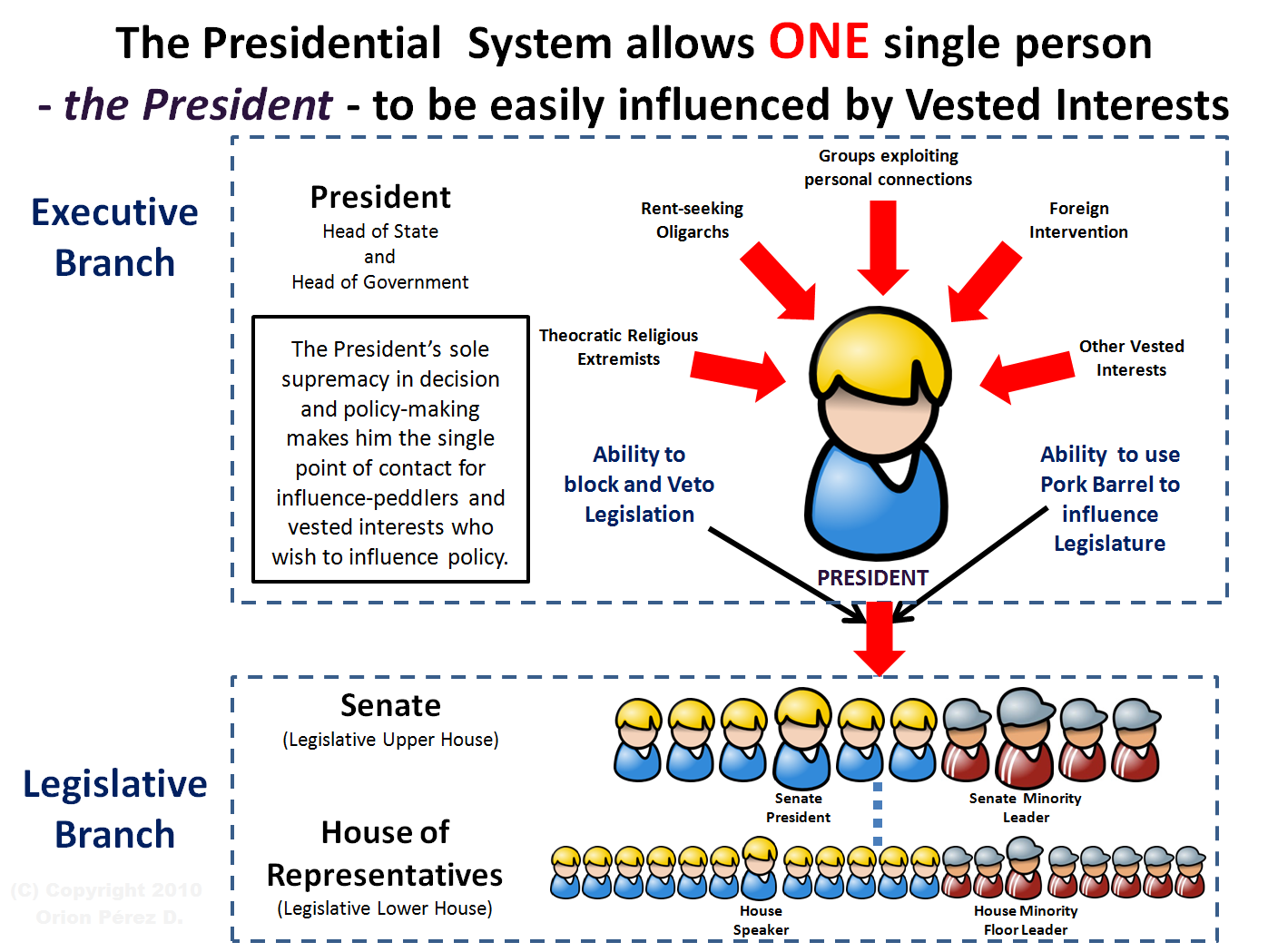
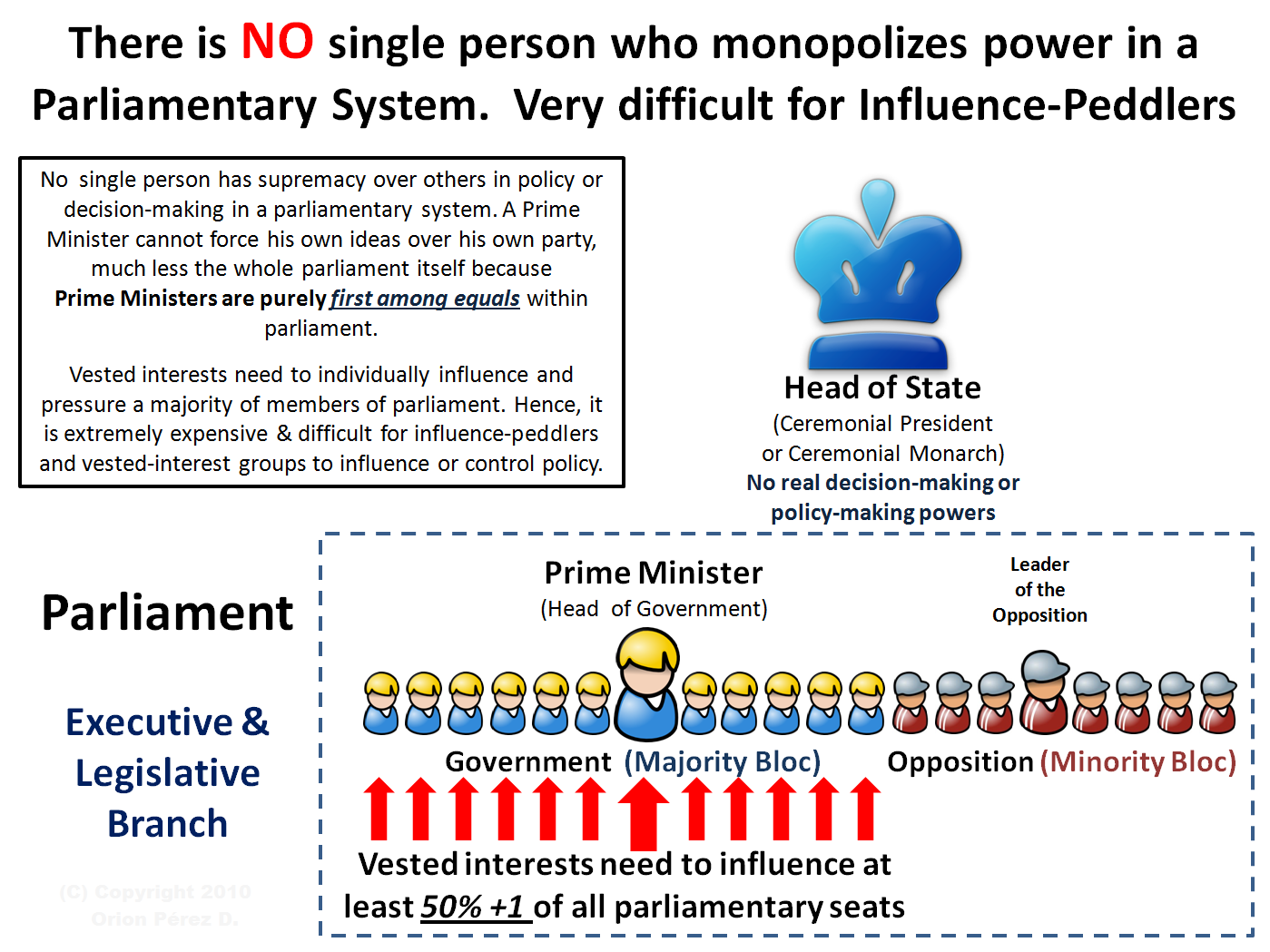

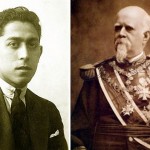




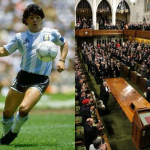

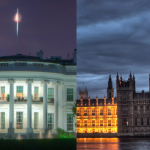




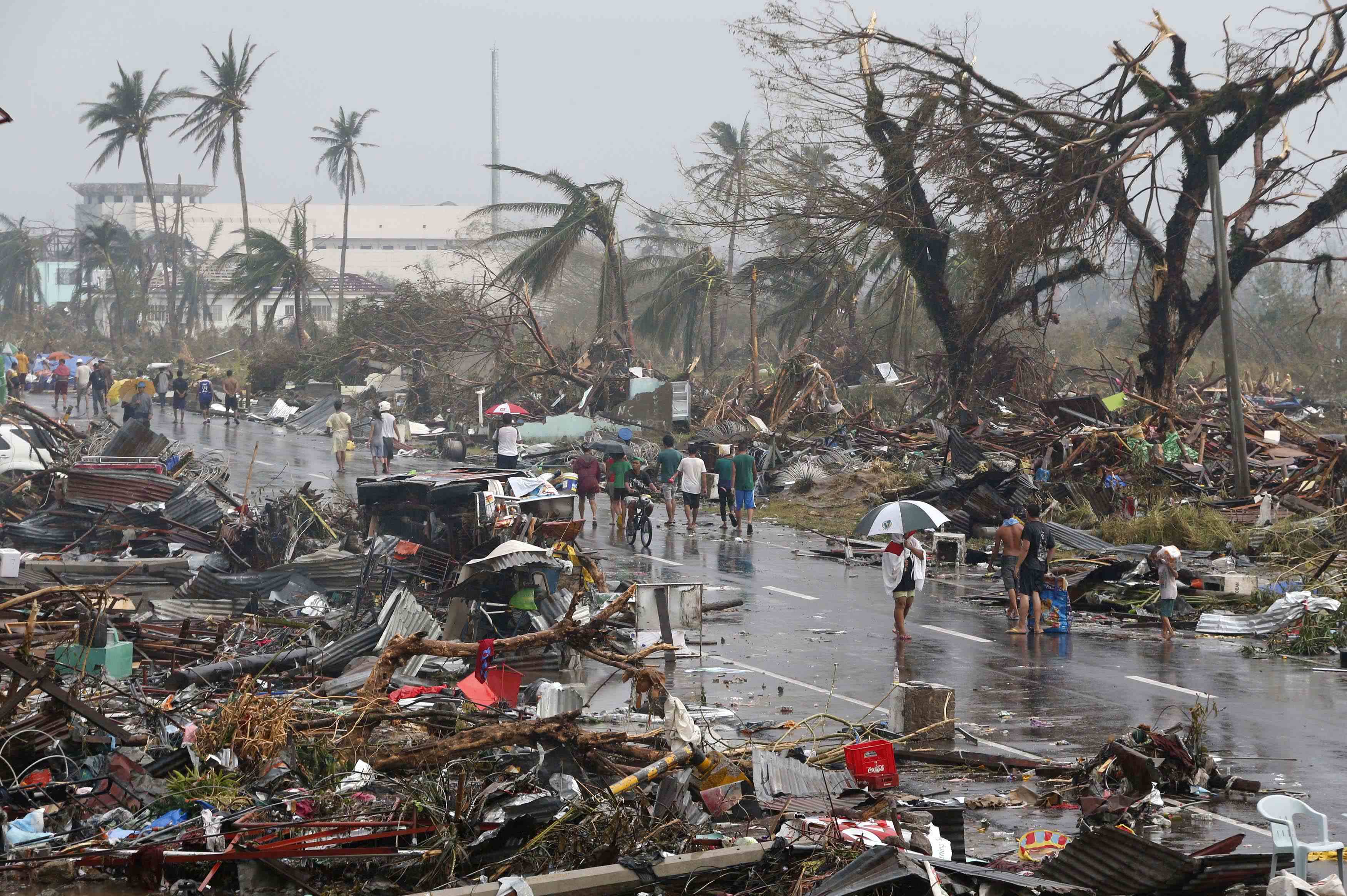


 I believe: This is a CoRRECT™ Video with a very positive message
I believe: This is a CoRRECT™ Video with a very positive message Walang Natira: Gloc-9's MTV Rap about the OFW Phenomenon
Walang Natira: Gloc-9's MTV Rap about the OFW Phenomenon












